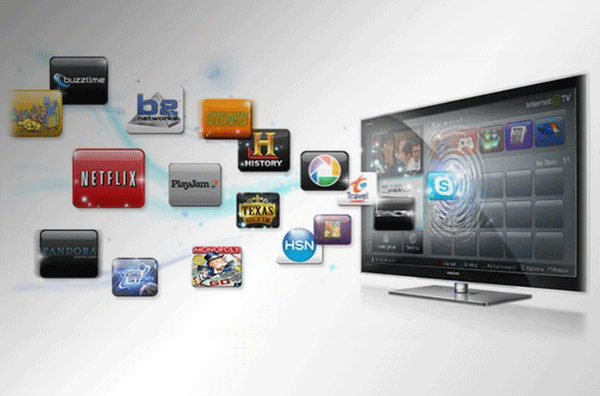2013 TVs: The fine line between features and gimmicks

Panasonic has officially unveiled its 2013 line of TVs, following the brief glimpse we got at CES in January. There are some stunning models to behold – the jaw-dropping Kuro-crushing ZT60 Plasma is already racing up the list of gadgets we’d love to own but will never, ever have the cash to buy.
But they have us wondering where the fine that separates a gimmick from a worthwhile feature is drawn these days. Has the incredible growth of smartphones and apps has effectively validated today’s tellies being filled with more extras than Ben Hur?
Features you’ll find in a 2013 TV from Panasonic include – but are not limited to – voice recognition, a pop-up camera, face recognition, games, up to eight customisable home screens, a note taker, a web browser and smartphone media streaming.
Once upon a time, setting up a TV required a quick tweak of a few settings. Now it’s like setting up a computer. And where TVs used to be things you plugged other things into, they’re now content platforms in their own right.
It’s progress of a sort, but we’re not convinced it’s progress that will benefit normal people like us – the TV buyers – or the smart TV market in general.
One of Smart TV’s biggest problems is that it essentially replicates the infrastructure we all use in smartphones and tablets, but in a more awkward fashion. The similarities between Panasonic’s new my Home Screen smart interface and Android are clear – the customisable home screens, the widgets and the app-like approach – but this interface style is so deeply tied to the touchscreen that a phone-like smart interface on a TV still feels odd.
And no, the solution is absolutely not touchscreen TVs.
But is there a solution? Is there even a problem to solve? Panasonic may not need all its TV buyers to embrace all the online doodads it packs into its TVs, but limited mainstream embracing of the concept of Smart TV is a serious problem for Google TV, and could be for Apple if the rumours of an Apple-flavoured TV are more than myths.
A new approach is required if TVs are to get out of the rut they’re currently in, and it’ll forcefeed the lounge’s largest screen a few slices of humble pie.
The TV needs to appreciate that it’s not longer the king of the house. Families are atomised by the networking nerve centres of phones and tablets, and even gadget-loving families subscribing to Von Trapp-grade familial cohesion are more likely to get their digital thrills from a shared iPad than a smart TV home screen.
Smart TV needs to take a back seat, and focus on providing an experience tailored to the way people consume content, not one based around the way companies want people to consume it. The war’s over, the small screen won over the big, and TVs need to accept their newly-subjugated position.
We don’t need shopping list apps, Twitter clients and full web browsers for our tellies, complicating the user experience and ensuring the grans of tomorrow still won’t know how to setup their new TV.
Among the more gimmicky features, which are those that stick in the mind most readily, there is some solid work being done to get us in the right direction, though.
Panasonic’s my Home Screen interface tries pretty hard to merge the worlds of the TV and tablet/smartphone. You can fairly easily send media to a TV from a tablet, or vice versa, using Panasonic’s app. Of course, the need for an app is part of the issue we’re discussing.
The borders that limit the ways a TV can talk to, say, a tablet are ones that every user has to surmount. They’re not merely technical barriers, but political ones too.
The politics of ecosystems are partly to blame for some of the difficulties smart TV faces, especially in terms of increasing understanding in a less-than-techy audience, making connecting a TV to a phone or tablet frequently a little tricky. Cross-communication of devices is one of the most interesting pools for smart TV to dip into, but for it to really become mainstream it needs a world-class interface.
Here’s the rub – TV makers will find it hard, if not impossible, to make the requisite investment to create and maintain such an interface. The Panasonic mobile apps that let devices like Android phones talk to a Panasonic TV are good, but they’re not that good. At the time of writing, there are six TV-related apps on Google Play. In terms of mainstream messaging, that is a problem in itself.
To break out, the TV market needs a disruptive influence. Something that will demonstrate unmissably where TV interface makers’ priorities need to sit going forward.
You guessed it, the most likely candidate is Apple. It has the potential to not only make the changes in smart TV strategy we’re hoping for, but also open the eyes of non-geeks to what smart TVs are capable of. Yes, it’ll nick all the glory once more, but could be just what the market’s development needs. What do you think? Is the Apple TV a myth, a dead-cert or an opportunity for Apple to “jump the shark”?


